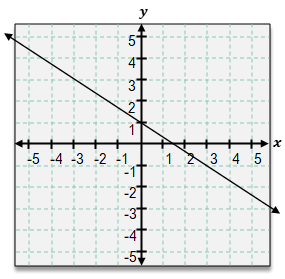Find the domain of the rational function. Then, write it in lowest terms.
Table of contents
- 0. Functions4h 53m
- 1. Limits and Continuity2h 2m
- 2. Intro to Derivatives1h 33m
- 3. Techniques of Differentiation2h 18m
- 4. Derivatives of Exponential & Logarithmic Functions1h 16m
- 5. Applications of Derivatives2h 19m
- 6. Graphical Applications of Derivatives6h 0m
- 7. Antiderivatives & Indefinite Integrals48m
- 8. Definite Integrals4h 36m
- 9. Graphical Applications of Integrals1h 43m
- 10. Integrals of Inverse, Exponential, & Logarithmic Functions21m
- 11. Techniques of Integration2h 7m
- 12. Trigonometric Functions6h 54m
- Angles29m
- Trigonometric Functions on Right Triangles1h 8m
- Solving Right Triangles23m
- Trigonometric Functions on the Unit Circle1h 19m
- Graphs of Sine & Cosine46m
- Graphs of Other Trigonometric Functions32m
- Trigonometric Identities52m
- Derivatives of Trig Functions42m
- Integrals of Basic Trig Functions28m
- Integrals of Other Trig Functions10m
- 13: Intro to Differential Equations2h 23m
- 14. Sequences & Series2h 8m
- 15. Power Series2h 19m
- 16. Probability & Calculus45m
0. Functions
Common Functions
Struggling with Business Calculus?
Join thousands of students who trust us to help them ace their exams!Watch the first videoMultiple Choice
In the graph shown, identify the y–intercept & slope. Write the equation of this line in Slope-Intercept form.

A
y=32x+1
B
y=−32x+1
C
y=−2x+1
D
y=x+2
 Verified step by step guidance
Verified step by step guidance1
Step 1: Observe the graph and identify the y-intercept. The y-intercept is the point where the line crosses the y-axis. In this graph, the line crosses the y-axis at y = 1.
Step 2: Determine the slope of the line. The slope is calculated as the change in y divided by the change in x (rise over run). From the graph, pick two points on the line, such as (0, 1) and (3, -1). Calculate the slope using the formula: slope = (change in y) / (change in x).
Step 3: Substitute the y-intercept and slope into the slope-intercept form of a linear equation, which is y = mx + b, where m is the slope and b is the y-intercept.
Step 4: Verify the equation by checking if the line passes through other points on the graph. For example, substitute x = 3 into the equation and confirm that y = -1 matches the graph.
Step 5: Compare the derived equation with the given options to identify the correct answer. Ensure the slope and y-intercept match the graph.

 5:57m
5:57mWatch next
Master Graphs of Common Functions with a bite sized video explanation from Patrick
Start learningRelated Videos
Related Practice
Multiple Choice
Common Functions practice set


